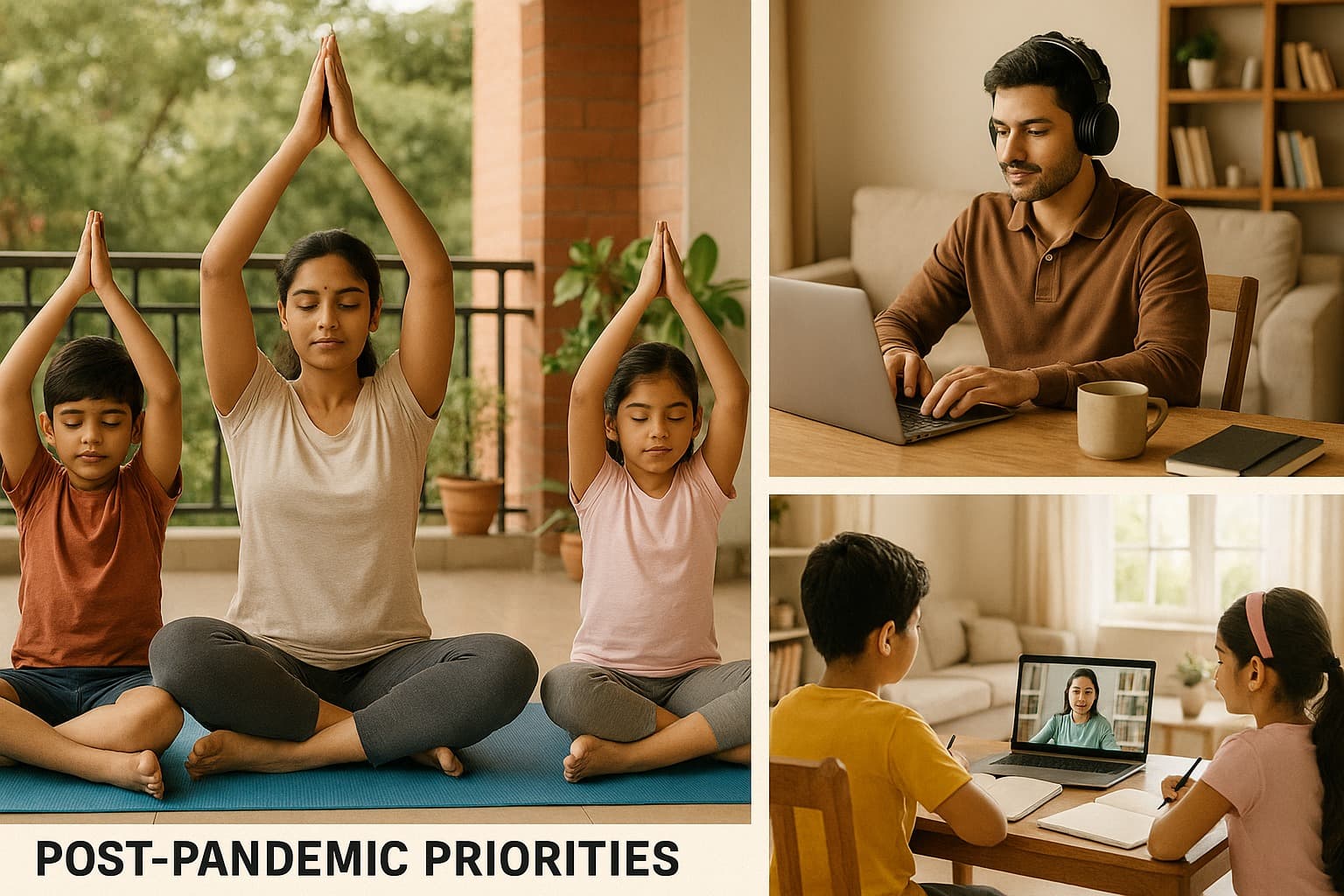Post-Pandemic Buyer Preferences in Indian Real Estate
Summary
The Indian real estate market has shifted post-pandemic, with buyers prioritizing space, comfort, and WFH-friendly features. Safety, hygiene, and amenities are now essential, driving demand for larger homes and integrated communities.

Post-Pandemic Buyer Preferences in Indian Real Estate
The world of real estate in India has changed dramatically since the Covid-19 pandemic. Buyers are no longer making decisions purely based on location or price. The post-pandemic real estate market has brought a shift in priorities, redefining what people consider essential in a home. Today, buyer preferences housing revolve around space, comfort, security, and lifestyle amenities, all of which are influencing housing demand India 2025.
From young professionals to growing families, everyone is thinking differently about their next purchase. Gone are the days when a small apartment near the office sufficed. The pandemic highlighted the importance of living spaces that cater to work, leisure, and well-being. These real estate choices buyers make are shaping a new era in Indian housing.
Space, Comfort, and Lifestyle: The New Priorities
One of the most notable post-pandemic changes in homebuyer preferences is the demand for larger homes. People now want rooms that can double as offices, study areas, or fitness zones. The work-from-home impact on real estate choices is unmistakable: buyers want homes that allow them to work productively without sacrificing comfort.
Green spaces, balconies, and private outdoor areas are also becoming essential. Families are looking for communities that offer safety and recreation, reflecting the housing demand shifts post-pandemic. Amenities like gyms, swimming pools, and walking tracks are no longer optional—they are expected in post-pandemic real estate developments.
Bigger Homes and Gated Communities

Another significant trend is the shift towards bigger homes and gated communities post-pandemic. Apartments and villas with spacious layouts and multiple rooms have gained popularity. Families value privacy, security, and a sense of community, which gated townships provide.
Developers have responded to this shift by designing post-pandemic property preferences shaping Indian housing market. In cities like Bengaluru, Pune, and Hyderabad, buyers are drawn to projects with ample green areas, communal amenities, and layouts that allow natural light and ventilation. The goal is a healthy, comfortable lifestyle that can sustain work-from-home arrangements and provide a sense of normalcy.
WFH-Friendly Homes
Work-from-home culture is now deeply embedded in Indian life. Buyers are actively seeking buyer demand for WFH-friendly homes in India 2025, which include dedicated workspaces, high-speed internet, and quiet corners for uninterrupted focus. Even smaller apartments are being designed to accommodate multifunctional spaces, reflecting the real estate buyer trends in India after Covid-19.
Developers are integrating home offices, co-working areas, and smart home features into new projects. Families now consider whether a home can support online learning, remote work, and daily household activities simultaneously. Homes are no longer just living spaces—they are multifunctional hubs.
Safety and Hygiene: New Essentials
Health and safety have become non-negotiable. Buyers now prefer properties with controlled access, sanitation measures, and proper maintenance. This trend is particularly evident in gated communities and township projects, where safety protocols and hygiene are strictly monitored.
Amenities like touchless elevators, sanitization stations, and well-ventilated common areas are now part of real estate buyer trends after Covid in India. People are seeking homes that provide peace of mind and a sense of well-being, not just four walls and a roof.
Regional Variations in Buyer Behavior
The housing demand shifts post-pandemic are not uniform across India. In metros like Mumbai, Delhi NCR, and Bengaluru, there’s a preference for bigger apartments with premium amenities. Buyers in these cities are often willing to pay extra for space, comfort, and security.
In tier-2 cities, affordability still matters, but buyers increasingly look for modern amenities and safer living environments. Cities like Pune, Indore, and Jaipur show a rising demand for post-pandemic real estate that balances space, lifestyle features, and affordability. The result is a diverse market where property trends after Covid vary depending on regional preferences and socio-economic factors.
Developers Responding to Changing Needs
Forward-thinking developers are adapting to post-pandemic changes in homebuyer preferences by offering projects that cater to these evolving demands. Larger floor plans, dedicated office spaces, green areas, and modern amenities are becoming standard features.

Integrated townships with schools, healthcare facilities, retail spaces, and recreational areas are particularly attractive. By aligning with the real estate choices buyers are making today, developers are ensuring higher occupancy rates and stronger long-term returns.
Future Outlook
The pandemic has permanently reshaped real estate buyer trends after Covid in India. The demand for bigger homes, gated communities, and WFH-friendly layouts will continue into 2025 and beyond. Buyers are no longer looking at homes purely as investments—they want comfort, convenience, and lifestyle.
Developers who embrace these post-pandemic property preferences shaping Indian housing market are likely to succeed. Homes with multifunctional spaces, ample greenery, and modern amenities are becoming the standard. This trend is not a temporary spike; it reflects a deeper transformation in how Indians live and work, making housing demand India 2025 more dynamic than ever.
Conclusion
The post-pandemic era has redefined buyer preferences housing in India. From work-from-home impact on real estate choices to the shift towards bigger homes and gated communities post-pandemic, the market has evolved to meet changing lifestyles. Safety, hygiene, and modern amenities are no longer optional—they are expected. Regional variations influence priorities, but the overarching trend is clear: buyers want homes that provide space, comfort, and lifestyle. The real estate choices buyers are making now reflect a permanent shift. Understanding these property trends after Covid is essential for developers, investors, and homebuyers navigating post-pandemic real estate in 2025.
Summary (100 words)
The Covid-19 pandemic has permanently reshaped post-pandemic real estate in India. Buyers now prioritize space, comfort, and lifestyle amenities, reflecting post-pandemic changes in homebuyer preferences. Demand for larger homes, gated communities, and WFH-friendly homes in India 2025 is rising, while safety, hygiene, and modern facilities have become non-negotiable. Regional variations exist, with metros favoring premium features and tier-2 cities balancing affordability with convenience. Developers are responding with integrated townships, flexible layouts, and multifunctional spaces, aligning with evolving real estate buyer trends after Covid in India. The market demonstrates that property trends after Covid are a lasting shift, shaping housing demand India 2025.
